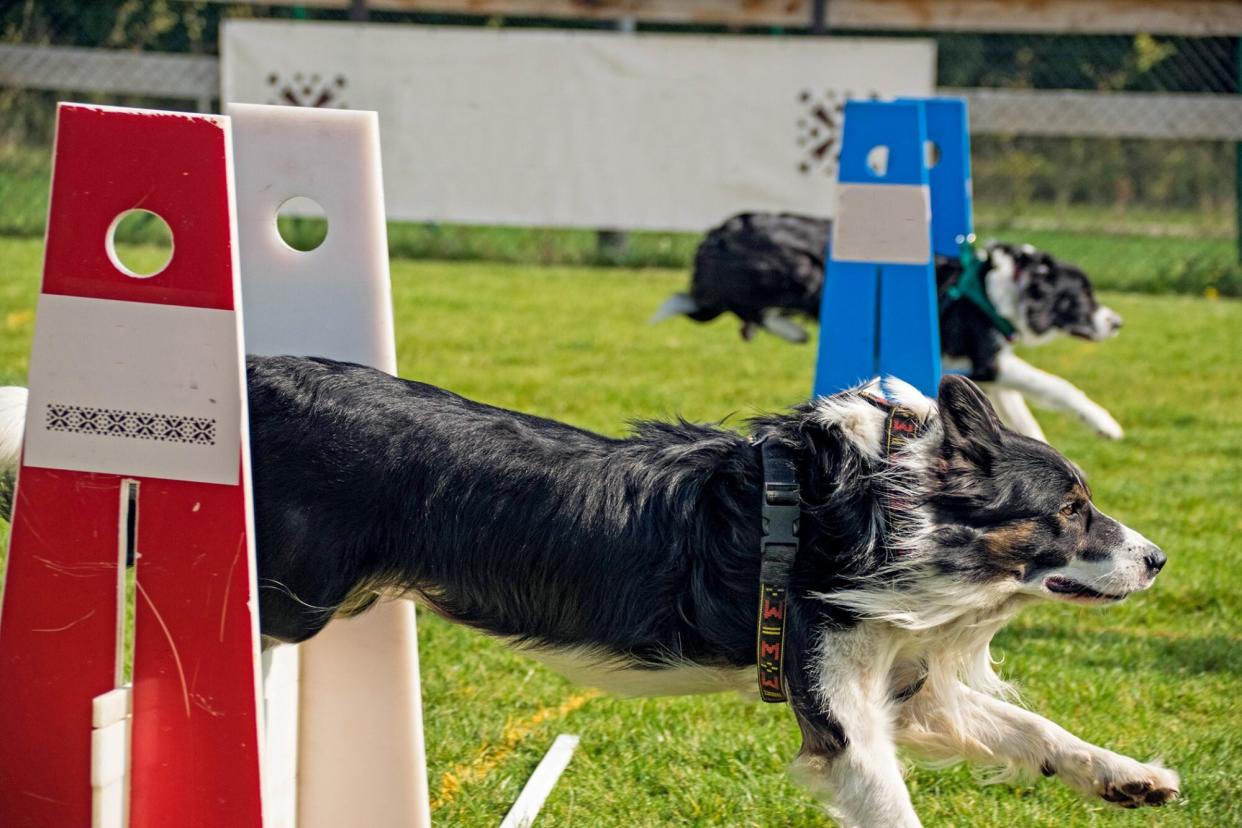Flyball: A Unique Team Sport to Strengthen Your Bond With Your Pup

dodafoto / Shutterstock
Calling all spunky dogs: Flyball may be the perfect sport for you! This high-energy relay race takes a combination of speed, agility, focus, and smarts to beat the competition. It's an excellent outlet for any dog that wants more than a daily walk. It's also an opportunity to strengthen the bond between you and your pup. Even kids as young as seven can get in on the action and coach their four-legged best friends.
If you have the time for practices and travel tournaments, there's no other dog sport like it, says Steve Corona, chairman of the board for the North American Flyball Association (NAFA). "It's the only dog sport you play as a team. Many clubs have been together for years and are like a second family," he says.
What Is Flyball?
Flyball is a four-dog relay race. Dogs jump over hurdles before reaching a raised platform that shoots a ball out when their paws tap it. Within fractions of a second, a dog catches the ball and runs back through the course to the team. The relay teams usually complete the race in about 24 seconds with the world record being 14 seconds—these canine athletes are fast!
It's a great form of exercise for dogs, both physically and mentally. Flyball dogs become stronger and increase their stamina through training, just like any other athlete. But they also have to learn extreme focus because the flyball arena is loud. Dogs are barking to be let out of their crates. Pet parents are chatting with their teams and getting their pups excited. So flyball athletes have to learn to pay close attention to their pet parents and ignore everything else.
"At first glance, it may seem almost chaotic," says Corona. "However, the dogs and their handlers are very much in sync with each other and with the other dogs and handlers on their team."
Flyball Dog Gear
You don't need much training gear to get started. You can work on the foundational stuff at home, like teaching dogs the course pattern with a few hurdles (or jumps). A lot of pet parents build their own hurdles or you can purchase them from people who make them at home.
You'll also need a tennis ball. (If your pup is little, you can use a smaller rubber ball so it's easier for him to grip in his mouth.) Place the ball at one end of a space and then put a hurdle between it and your dog. You start by teaching your dog to jump over a hurdle to get to the ball and then keep adding hurdles, explains Corona.
But, he admits, it's hard to replicate the level of distraction that takes place at tournaments and the flyball box that dogs tap isn't readily available for purchase. It's best to join a local club that has all the flyball equipment.
Dog Breeds That Typically Compete in Flyball Competitions
All dogs who are physically capable of completing the flyball course are welcome to play. There aren't any breed restrictions. But herding, retriever, and terrier breeds tend to be naturals at the sport. "However, I've seen all breeds and sizes from Great Danes to Chihuahuas compete and enjoy playing flyball," Corona reports. "There are even tri-pawed dogs that have competed successfully."
How to Start Flyball Training With Your Dog
If you'd like to see how your pooch takes to flyball, a good first step is to find a flyball club in your area. They typically offer classes and will match you up with teammates. Practices are usually once a week.
There are so many ways to exercise with your dog, from running to hiking to even doing yoga together. But flyball has a lot of unique qualities. It's not just physically challenging but also mentally stimulating, and it offers both you and your dog the opportunity to build lasting friendships with other people and pups.
But the biggest benefit, says Corona, is how close you and your dog become. "When you practice, travel, and compete in flyball, you create an inseparable bond between you and your dog," says Corona. "Regardless of what level you compete, the most important thing to remember is to always have fun with your dog."

